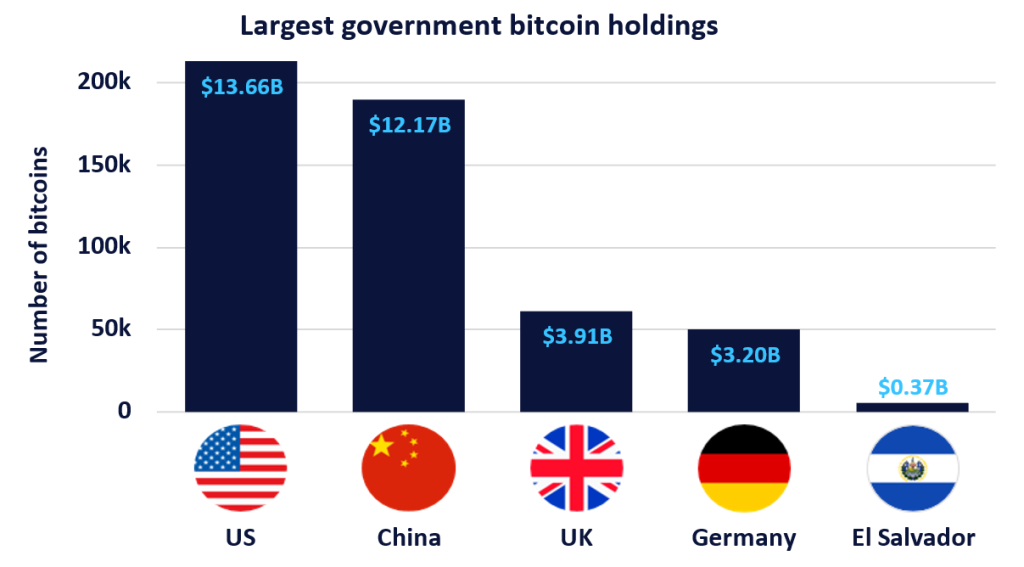
The past 18 months or so have been dominated by the release of economic data, with traders and investors looking to things such as the UK’s inflation print or wage growth statistics to gain valuable insights into the health of the economy.
Indeed, economic data tends to indicate the direction in which the economy, and perhaps more importantly the Bank of England, is moving; if core inflation rises rapidly one month, for example, investors could expect a more hawkish reaction from the central bank at its next monetary policy meeting. In turn, this has an impact on the movement of bonds, currencies and stocks.
Due to the volatile nature of the financial markets in recent years, monitoring the UK’s economic data has become a more integral part of investing.
However, this is no easy task, particularly if the data unexpectedly deviates from market expectations, creating shockwaves that can impact the currency, stock, bond and commodity markets in many different ways.
May’s inflation data release surprised the market
Since UK inflation began rising rapidly and the Bank of England began hiking the base rate significantly, investors have placed even more emphasis on keeping track of economic data releases. However, economic data has frequently surprised the markets, catching investors in the lurch.
On 21 June, for example, the UK’s consumer price index (CPI) print came in hotter than expected and rose by 8.7% in the 12 months to May 2023. This indicated that inflation was unchanged from the month before, surprising the markets, which had forecast the headline print to fall to 8.4%.
How well do you really know your competitors?
Access the most comprehensive Company Profiles on the market, powered by GlobalData. Save hours of research. Gain competitive edge.

Thank you!
Your download email will arrive shortly
Not ready to buy yet? Download a free sample
We are confident about the unique quality of our Company Profiles. However, we want you to make the most beneficial decision for your business, so we offer a free sample that you can download by submitting the below form
By GlobalDataMoreover, with core inflation rising to 7.1% – far above the predicted 6.8% and the highest it had been since 1992 – the Bank of England then decided to hike the base rate by 50 basis points on 22 June, twice the amount that the markets had predicted.
How does surprise economic data impact the markets?
So, how does surprise inflation data impact the markets? And how can investors make the most of them?
Obviously, some markets will react differently to others in the wake of unexpected economic data.
In the currency markets, for instance, unexpected economic data can have a significant impact on currency valuations. In the wake of the latest UK inflation print, the pound briefly rallied to 1.2802, before reversing its gains and pushing back down into negative territory after concerns that the Bank of England would have to keep rates higher for longer to calm inflation, potentially pushing the UK economy into a recession.
Meanwhile, stock markets are heavily influenced by surprise economic data, particularly in sectors that could be directly impacted by a release. Like the British pound, London stocks fell after the UK’s CPI print was released, with homebuilders suffering the brunt of the fall as investors feared that elevated mortgage rates would lead to a property market slow down.
Elsewhere, bond markets are particularly sensitive to unexpected economic data, mainly because of the influence that interest rates have on their attractiveness to investors. This was also reflected in the market reaction to May’s CPI data, with two-year government bond yields hitting their highest level since 2008.
In the commodity markets, unanticipated data usually impacts demand most significantly because it indicates either economic strength or weakness. Therefore, when economic data shows that an economy is weakening, commodity prices tend to fall because investors anticipate a decrease in demand for raw materials and resources, prompting them to sell their commodity assets and applying downward pressure on prices.
Finally, beyond the initial reaction to a data release from the markets, the sentiment that data can instil can often have the biggest impact on investors’ activities and practices. For instance, a good surprise will often lead to investors having a more bullish outlook, while negative surprises mostly encourage investors to be more cautious.
How can investors trade surprise data?
What is clear from the above is that, when economic data surprises the market, a great deal of volatility can be produced. As such, depending on the type of release and the extent of the surprise, there can be significant price movement opportunities on which investors can capitalise. So how should they approach surprise data?
One approach is to enter at market price immediately or shortly after the release of a surprise announcement. This strategy works best for high conviction trades and major market events, but it is crucial to avoid buying at the peak of a spike that could quickly reverse, so traders must be selective when entering the market and have a clearly defined exit strategy.
Alternatively, more cautious investors could enter at retracement, which means that they wait for a temporary pull-back or price correction after the initial market reaction to the data release. This approach means traders can enter the market at a point that is potentially more favourable, reducing the risk of entering at the peak of what could be a temporary spike. However, a weakness of this approach is that the price may not retrace.
Finally, for investors who prefer to pre-empt a data release, entering the market before the data has been made public could help them capitalise on the initial market reaction. For instance, if an investor had anticipated hotter than expected inflation in May, they could have benefitted from the brief rally of the pound in the immediate aftermath of the CPI print being announced. Obviously, this approach relies on correctly anticipating how the market will react, so investors would do well to analyse historical patterns, market sentiment or previous trends in advance of a release.
While this approach could potentially yield profits if the anticipation is correct, it is crucial to implement appropriate risk management measures and be prepared to adjust strategy quickly if needed. Going back to the example above, for instance, investors who capitalised on the brief rally of the pound would have had to quickly sell off their holdings in order to maintain gains because the currency soon reversed.
To conclude, navigating unexpected economic data requires careful analysis and risk management, as well as a clearly defined plan. Therefore, investors should monitor market expectations and economic indicators well ahead of the announcement of economic data in order to be prepared for any unexpected deviations and to gain an understanding of how different markets react to surprising or unsurprising economic data. That said, investors should carefully consider their individual circumstances before attempting to navigate what could be an increasingly turbulent economic landscape.




